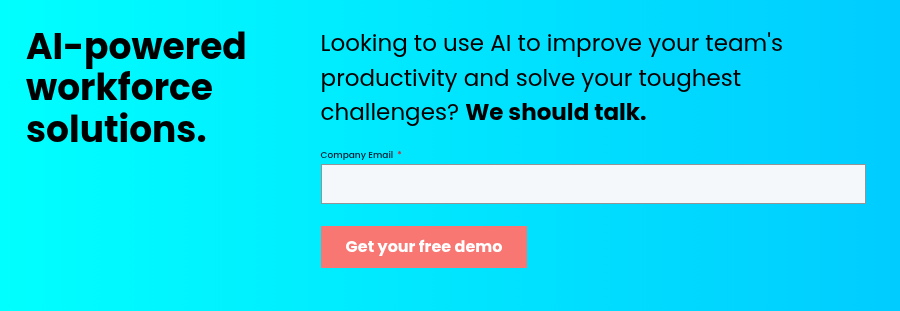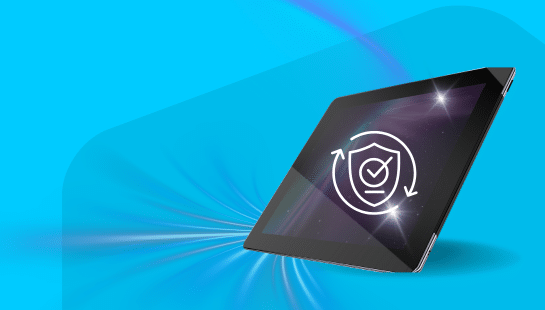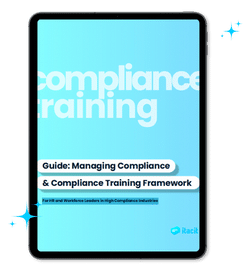Here’s a surprising fact – 72% of companies still do annual performance reviews, yet 87% of both managers and employees think they don’t work.
The numbers tell the story. Most organizations rely on traditional performance reviews that simply aren’t effective. Deloitte’s research shows their employees spend over 2 million hours each year on performance reviews – that’s roughly 244,000 people investing significant time. The results don’t justify this massive investment.
The evidence speaks clearly. Research shows that 60% of employees would rather get feedback regularly. Employees who receive daily manager feedback become three times more engaged than those getting annual reviews.
Companies now face a gap between their current practices and what actually works. This has created a perfect chance for AI performance review solutions to emerge. HR leaders have noticed – 41% now list evaluating GenAI tools for HR processes as their top priority.
AI performance reviews are reshaping how companies evaluate employees. These tools make reviews more accurate, quick, and valuable by replacing yearly subjective assessments with analytical, continuous feedback.
This piece will show how AI is changing performance reviews completely. We’ll look at the main benefits and challenges of these tools and share practical tips to add AI into your performance management system successfully.
How AI is Changing the Performance Review Landscape
The traditional performance review model no longer serves its purpose. Recent studies show 95% of business managers report dissatisfaction with their current performance review systems because of information inaccuracies and bottlenecks. This widespread frustration creates perfect conditions for AI technology to alter the map of employee performance assessment.
From annual reviews to continuous feedback
Annual performance reviews have been part of corporate life for decades. But this outdated approach gives feedback too late to be useful. Managers who wait until year-end reviews miss vital opportunities to help employees grow throughout the year.
“Delayed feedback is often outdated and unusable,” notes one industry expert. This timing gap explains why organizations like Accenture dropped annual reviews for their 330,000 employees. Deloitte started a pilot program that focuses on constant feedback through just four simple questions in frequent reviews.
AI performance review tools solve this problem by creating continuous feedback loops. AI analyzes performance with up-to-the-minute data analysis and gives immediate explanations to employees and managers. This change matters because employees who receive daily feedback from managers are three times more engaged than those receiving feedback once a year.
The effects are substantial:
- Employees can adjust and improve throughout the year instead of scrambling before a review
- Managers give timely recognition and constructive criticism
- Organizations benefit from continuous improvement rather than annual course corrections
AI-powered continuous feedback creates a learning-oriented workplace culture. Employees adapt and improve consistently as the focus moves from performance assessment to performance growth. An iTacit client noted after using their digital performance review software, “Employees no longer fear reviews when learning and development are emphasized over mistakes.”
The change from subjective to evidence-based evaluations
Traditional performance reviews face a basic problem, they depend heavily on managers’ subjective perceptions. These impressions can reflect recency bias, favoritism, and other unconscious factors that distort evaluations.
AI changes this process by basing performance reviews on data rather than perceptions. An AI employee performance review gathers detailed data from multiple channels, including emails, instant messages, internal platforms, and project management tools. It analyzes everything from productivity patterns to communication effectiveness.
IBM’s Watson system predicts employee performance by combining data points like engagement, sentiment, and key performance indicators (KPIs) to give managers more objective assessments. On top of that, iTacit’s AI HR Assistant helps managers exploit feedback given across time and place for a full picture of employee performance.
This approach leads to more accurate, fair, and meaningful assessment. AI performance management tools analyze big amounts of information, spot patterns, and deliver applicable information that human managers cannot process manually. This evidence-based approach helps organizations:
- Move beyond subjective evaluations to detailed, objective assessments
- Cut down recency bias by tracking performance consistently
- Give individual-specific feedback based on personal strengths and challenges
One tech company discovered that after introducing AI to support managers in writing performance reviews, the feedback became more objective and bias-aware. This helped especially in evaluating women, people of color, and LGBTQ+ professionals, who often receive vague or personality-driven comments.
Performance reviews are changing faster than ever. AI addresses fundamental problems in traditional performance reviews by enabling continuous feedback loops and evidence-based evaluations. This rise doesn’t just change how companies conduct reviews, it transforms relationships between managers, employees, and performance improvement.
Key Benefits of AI in Performance Reviews
Companies that use AI for employee performance reviews see big gains in several areas. A McKinsey & Co. report shows AI adoption has more than doubled in the last two years. Performance management stands out as a key area where AI makes a difference.
Improved feedback accuracy and fairness
AI performance review systems excel at reducing human bias. This represents one of their biggest benefits. A Gartner survey of over 3,000 U.S. workers found that more than 80% believe AI algorithms could deliver fairer and more accurate performance reviews compared to human managers.
Employees trust AI because it looks at performance data without bias. Traditional reviews often show favoritism or focus too much on recent events. AI tools look at data points gathered over time. This gives employees detailed assessments that show their real contributions throughout the review period.
Better accuracy comes from several sources:
- AI looks at past and current data to spot potential improvements or weak areas
- The system tracks performance metrics without bias
- The software flags patterns that might show bias, which helps managers give balanced feedback
iTacit’s digital performance review software shows this approach well. It shares a complete employee record and can integrat with different sources of truth to show a complete picture of employee contributions and reduces personal bias.
Faster and more efficient review cycles
AI performance management saves a lot of time. Managers report they spend 40% less time on paperwork after using AI-assisted review processes. Data collection, analysis, and initial reports happen automatically.
“If you have a UX that’s easy for someone to use, if it’s helping them to write constructive feedback and make it more polished and professional using AI rewriting tools, you’re going to lower that barrier of resistance,” notes one industry expert.
Companies that use AI-powered review tools often see:
- Response rates jump up to 40% through smart reminders
- Review cycles finish faster
- More time to talk about growth and development
iTacit’s AI HR Assistant tackles these efficiency challenges but keeps the human touch in feedback.
Enhanced employee engagement through customized experiences
AI’s power to boost employee engagement through customized experiences stands out as its strongest advantage. About 9 in 10 managers and employees who use AI in their reviews report high satisfaction. This number drops to just 40% for employees without AI-enabled performance management.
Employee engagement improves for several reasons:
AI creates truly customized development plans. The system learns about each person’s performance, finds their strengths and weak spots, and suggests specific training that lines up with their career goals.
Regular feedback backed by AI gets people more involved. Gallup’s research shows employees who get daily feedback from managers are three times more engaged than those who get yearly feedback. AI makes this possible by watching performance and letting managers know when to step in.
AI tools can spot early signs of problems. They use live analytics to find patterns like dropping productivity or negative feedback that might show someone’s losing interest. Managers can step in before small issues become big problems.
iTacit’s shines with its ability to create personalized recognition. The system can prompt timely acknowledgment that builds positive behaviors and motivation. This quick recognition creates better results than traditional yearly reviews.
Real-Time Feedback and Continuous Evaluation
AI performance reviews give immediate feedback instead of waiting for yearly evaluations. Research shows companies that use immediate feedback are 30% more likely to meet their goals. Quick adjustments and honest conversations make this possible. This transformation changes how companies help employees grow.
How AI enables ongoing performance tracking
Managers no longer depend on memory and gut feelings alone. AI performance tracking systems now use machine learning algorithms to watch employee and process efficiency without interruption. These systems gather and study data from several sources:
- Project management platforms
- Communication tools
- HR systems
- Productivity metrics
- Collaboration patterns
AI-powered tracking brings revolution through its power to spot performance patterns. The system catches small changes in productivity, communication success, and team work that managers might overlook. To name just one example, IBM’s Watson system predicts employee performance by combining data from engagement, sentiment, and key performance indicators.
This technology creates Dynamic Performance Management (DPM). Companies can now respond right away to employee needs, market changes, and company goals. Employees get feedback when they need it, not months later during traditional yearly reviews.
“The reality is that most employees crave ongoing feedback,” notes one HR expert. Managers who use tools like iTacit’s digital performance review software can share insights quickly and build a culture of open dialog. This method promotes a workplace where employees learn and improve constantly.
Predictive analytics adds another powerful tool. AI models track KPIs and can spot future bottlenecks, find promising talent, and see training needs before they hurt productivity. HR leaders can fix performance issues early and use resources better with this foresight.

Examples of AI-powered feedback loops
Many organizations already use AI-driven continuous feedback with great results. Tech Innovators Inc. faced dropping employee engagement scores and uneven performance ratings. The company saw an 18% rise in employee engagement after using an AI-driven continuous feedback platform. High-potential talent retention grew by 12%, while performance-related problems dropped by 25%.
FinanceWorks, a mid-size financial services firm, started using an AI-powered feedback loop. The system connected individual tasks to quarterly goals and analyzed sentiment during virtual meetings in real time. Project completion rates jumped 20%, and cross-functional collaboration increased by 30%.
A global tech company used AI agents to monitor team performance and improve workflows. They cut turnaround time by 30% by automating cycle time measurements and review processes. Software developers could then work on strategic tasks. Another company added a Burnout Detection Agent and saw team satisfaction scores improve by 25%.
iTacit’s AI HR Assistant shows these technologies at work. The system gathers performance data everywhere, giving managers a complete picture of employee contributions. A user shared, “Employees receive real-time insights and tailored coaching suggestions, making performance reviews less about a once-a-year judgment and more about an ongoing dialog”.
These AI-powered feedback loops excel at creating personal development experiences. AI studies individual performance data to find strengths and weaknesses. Then it suggests specific training that matches each employee’s career goals. Today’s workforce appreciates this switch from evaluation to development.
iTacit’s digital performance review software offers companies an easy way to start. The system handles administrative tasks while keeping the human side of feedback. HR professionals now call these “continuous performance conversations” rather than periodic reviews.
Reducing Bias and Improving Objectivity
Performance reviews often show human biases that affect evaluations unfairly. Research shows that 62% of employees believe their evaluations are influenced by biases related to gender, race, or background. AI offers promising solutions to this ongoing problem.
AI’s role in minimizing recency and favoritism bias
Recency bias remains one of the biggest problems in traditional performance evaluations. Managers place too much emphasis on recent events and overlook an employee’s performance during the review period. To name just one example, if an employee struggles with deadlines, their manager might give them a negative review, even if their overall track record was outstanding.
AI performance review systems help curb this problem by analyzing detailed historical data. These tools create a complete performance timeline and give equal weight to achievements throughout the year. Companies that use AI-driven systems have reported a remarkable 30% reduction in biased evaluations.
“Managers are not going to miss those things that might have been captured already or captured six months ago because it’s all there for them,” notes one performance management expert. This detailed approach helps protect against other unconscious biases such as:
- Affinity bias (favoring people similar to yourself)
- Favoritism toward certain team members
- The “halo and horns effect” (letting one trait influence overall perception)
AI performance management tools detect patterns that might indicate other forms of bias. These tools analyze metrics such as project deadlines met, teamwork contributions, and innovation rates. Evidence-based approach allows employers to recognize talent based on actual performance rather than subjective impressions.
iTacit’s helps leaders provide individual-specific, constructive, and unbiased feedback for employees that guides greater trust and focused career development.
Limitations of AI in fully eliminating bias
In spite of that, AI is not a magic solution for all bias concerns. Yes, it is important to think over these systems’ most important limitations.
AI algorithms depend on their training data quality. Historical performance data often contains bias, the AI will likely continue those same patterns. One study notes, “AI can inadvertently perpetuate existing biases present in their training data”. The survey found 57% of respondents worried that generative AI could intentionally introduce and perpetuate bias.
AI models’ complexity creates what researchers call a “black box inside a black box” problem. Algorithms make recommendations without clear explanations, and managers and employees may not understand how decisions are reached.
More than that, algorithms trying to be “race agnostic” or “race neutral” show the same bias patterns even when protective attributes are removed from model variables. This phenomenon, called “shortcut learning,” happens when AI learns patterns that associate with protected characteristics.
Organizations should take these steps to minimize limitations:
- Regularly audit AI algorithms for fairness
- Train AI models on diverse and representative data
- Maintain human oversight of AI-generated insights
- Develop clear policies for ethical AI usage
The best approach combines AI-powered checks with human judgment. iTacit’s digital performance review software balances these elements well. The system automates data collection and analysis while keeping human oversight of final decisions.
A Gartner report highlights this balance: “Managers will still finalize major decisions, as the human in the loop verifying and validating the bots’ recommendations”. This mutually beneficial collaboration between AI and human managers creates evaluations that are both evidence-based and contextually appropriate.
AI performance management tools cannot eliminate bias completely. They offer a major improvement over purely subjective reviews. Organizations using these technologies can make real progress toward fairer, more objective evaluation systems that recognize employee contributions accurately.

Challenges of Using AI for Writing Performance Reviews
AI brings impressive capabilities to performance reviews. However, organizations need to tackle several key challenges before they can implement it. Success depends on finding the right balance between AI’s benefits and its limitations.
Data privacy and security concerns
The recent surge in generative AI comes at a time when privacy laws are rapidly expanding worldwide. 13 states passed detailed data protection laws in less than three years in the US alone. Companies that use AI for employee performance reviews need to guide themselves through these complex regulations. Failing to do so could result in major compliance violations.
Note that HR data ranks among the most sensitive information companies handle. Performance evaluations contain personal details that need careful protection. Using AI tools with this data creates serious privacy risks. Many platforms keep information to improve their models unless users choose not to participate.
A Pew Research Center study revealed that 64% of employees feel worried about their personal data’s privacy during performance assessments. These worries make sense because unauthorized AI use can lead to:
- Intellectual property exposure
- Compliance violations and regulatory fines
- Financial and reputational damage
Companies must create clear policies about AI usage to protect sensitive information. These policies should cover who can access outputs, where data gets stored, and how long it’s kept. Making data anonymous before AI processing can lower risks. However, meeting the high standards of regulations like CPRA and GDPR remains challenging.
Over-reliance on AI-generated insights
Automation bias poses another vital challenge. Users often accept AI recommendations without proper review. This happens in part because questioning AI outputs takes extra work. This creates a risky trade-off between efficiency and proper scrutiny.
Poor decisions can result from this approach. Research shows students who heavily relied on AI dialog systems made worse decisions. Workers who depend too much on AI might develop lazy thinking habits and lose their critical thinking skills over time.
Managers who stop practicing how to give meaningful feedback risk losing an essential part of their role. One expert points out: “Adding more data into the mix doesn’t necessarily make the process easier or less biased, it may just add complexity that managers must somehow make sense of”.
The best approach combines AI assistance with human judgment. iTacit’s digital performance review software shows this balance well. It automates data collection while keeping the human elements of feedback intact. This prevents the “human-AI collaboration gap” where unchecked AI mistakes lead to poor decisions.
Lack of emotional intelligence in AI tools
AI performance review tools face a basic limitation – they cannot truly understand emotions. Despite amazing progress, AI cannot copy real empathy, self-awareness, or interpret complex social cues.
This limitation matters because emotions change constantly, contradict each other, and depend on personal and cultural context. AI models struggle with variables like sarcasm, cultural norms, and unconscious biases.
Real-world examples show these limitations:
- AI can write a performance review but without emotional understanding, conversations feel impersonal and leave employees confused
- AI can create team goals but without emotional intelligence, these goals might not inspire teams or create shared purpose
- AI can suggest promotion candidates but might base decisions on surface data, missing true leadership potential
Too much AI dependence could harm the subtle aspects of performance management. An industry expert explains, “It’s essential to strike a balance where AI complements, rather than replaces, the judgment of human managers”.
iTacit’s AI HR Assistant tackles this challenge by supporting human managers instead of replacing them. The tool provides analytical insights while letting managers use their emotional intelligence and understanding of context in feedback conversations.
Best Practices for Implementing AI in Performance Management
AI performance management needs careful planning and execution to succeed. Your success rate with these powerful tools depends on everything from software selection to manager training.
Choosing the right AI performance review software
Organizations need clarity about their needs before selecting AI performance management tools. You should define specific problems to solve before learning about options. Here are essential factors to review when looking at platforms:
- Features offered (data analytics, immediate feedback, goal tracking)
- Integration capabilities with existing HR systems
- Data security and compliance measures
- User experience and interface simplicity
- Vendor reputation and support
A small team experienced in AI should test the system before company-wide implementation. This helps you review the effect on performance evaluations, check user experience, and spot potential challenges. iTacit’s digital performance review software has detailed features that streamline administrative tasks while keeping the human elements of feedback.
Balancing AI insights with human judgment
AI should increase, not replace, human decision-making in performance management. Studies from Harvard Business Review with 1,500 companies showed that AI works best when it supports human capabilities. AI excels at data processing and pattern recognition, while humans bring nuanced understanding, emotional intelligence, and ethical recognition.
Managers should own the final output when using AI for performance reviews. Lattice’s responsible use, to name just one example, includes verifying sources and checking AI-generated content for bias. Create guidelines that specify what personal or company information can go to AI programs and use encryption to protect sensitive data.
Training managers to use AI tools effectively
The right training makes AI implementation successful. Managers need both technical knowledge and interpersonal skills. They must understand:
- Key AI concepts and capabilities
- Hands-on practice with specific tools
- Data privacy compliance procedures
- Methods for detecting and mitigating bias
Technical knowledge alone isn’t enough. Managers need guidance on maintaining meaningful human connections alongside their technical training. iTacit’s AI HR Assistant helps managers utilize performance data while keeping personal elements in feedback conversations.
Organizations should monitor the system regularly after implementation to gather user feedback, compare metrics, and improve their approach. Employee focus groups and satisfaction surveys help show how well your AI performance management system works in practice.
How iTacit’s AI HR Assistant Supports Smarter Reviews
Modern performance reviews require analytical insights and human expertise. iTacit’s AI HR Assistant helps bridge this gap and offers practical solutions to managers who want to improve their evaluation processes.
Overview of iTacit’s AI Assistant features
The AI assistant acts as a virtual co-pilot for managers. It makes administrative tasks efficient while spotting performance insights that might go unnoticed. The system keeps the human elements of feedback intact and removes most of the administrative work.
How it integrates with digital performance review workflows
iTacit’s solution shines through its smooth workflow integration. The AI HR Assistant works within existing performance management systems, unlike standalone AI tools. This creates a unified experience for managers and employees.
The system connects with your organization’s various data sources. Managers get continuous feedback from workflow-driven forms that can be triggered during work instead of disconnected evaluation experiences. The integration enables managers to:
- Access up-to-the-minute data analysis during review conversations
- Document feedback right after most important events
- Track progress against goals throughout review periods
- Generate detailed reports with minimal manual effort
iTacit’s digital performance review software adapts to your needs, whatever your current HR stack might be. The platform’s customizable templates and workflows match your existing processes while adding AI-powered insights.
The system helps organizations build consistent evaluation practices across departments. This consistency creates trust in the performance management system and improves employee satisfaction with reviews.

The Future of AI-Driven Performance Reviews
AI performance management stands at the brink of its most important development. Organizations feel more at ease with these technologies. New approaches emerge that will reshape how we measure and improve performance.
Trends in AI performance management
The next wave of performance management technology moves toward smarter, responsive systems. Real-time feedback mechanisms now provide instant learning based on performance data. A sales organization that implemented these systems witnessed a 20% boost in sales after adoption.
Data-driven goal setting emerges as another key trend. Future AI systems will set objectives that line up with individual capabilities while supporting organizational goals. Employees can work toward relevant, achievable targets instead of arbitrary measures.
Performance analytics grows more sophisticated each day. Tomorrow’s AI tools will go beyond simple evaluation to:
- Predict potential skill gaps before they affect productivity
- Identify future high performers through pattern recognition
- Recommend specific development opportunities based on individual data profiles
AI-powered search proves essential to employee growth. Dell Technologies implemented this approach and saw their intranet user satisfaction scores jump from 23% to over 60%.
How AI will shape employee development and retention
AI makes career development more tailored to each person. AI analyzes employee’s skills, interests, and aspirations to create custom growth paths instead of generic training programs. This change reflects employees’ desire for individualized development opportunities.
Smart self-service portals reshape how employees access organizational knowledge. These systems connect workers to relevant internal resources through natural language queries and help resolve common issues independently. HR teams can focus on strategic work while employee experience improves.
AI advisors will soon act as personal career guides. They suggest optimal career paths based on individual performance data and aspirations. Current AI systems focus on cognitive tasks, but future versions will include greater emotional intelligence capabilities.
iTacit’s AI HR Assistant shows this forward direction and helps organizations transform their approach to performance management. These tools integrate with digital performance review workflows and help create the continuous learning environment that successful organizations need in the coming years.
Conclusion
AI-powered performance management marks a radical alteration in how organizations assess their talent. This piece shows how AI tackles the main issues with traditional reviews – especially their subjectivity, infrequency, and administrative load.
Facts don’t lie. AI performance review systems gather information from multiple sources to create a detailed picture of employee contributions year-round. This objective method cuts down the effect of biases that traditional evaluations don’t deal very well with.
The switch from yearly reviews to ongoing feedback loops matches what today’s workforce needs. The numbers tell the story clearly. Up to 60% of employees want regular feedback, and those who get daily input show three times higher engagement levels than staff who only get annual reviews.
The benefits speak for themselves:
- Fairer, evidence-based evaluations
- Time savings of up to 40% on administrative tasks
- Higher employee satisfaction and engagement
- Personalized development opportunities
Some challenges still exist. Data privacy concerns need careful planning and protection. Human judgment must balance AI recommendations to avoid over-reliance on automated systems. AI also lacks the emotional intelligence that makes feedback meaningful.
Organizations that want to implement AI can start with iTacit’s digital performance review software. The system makes administrative tasks easier while keeping human interaction in feedback discussions. Their AI virtual assistant for HR helps managers spot trends and knowledge gaps over time.
The outlook seems promising for AI-driven performance management. Predictive analytics will spot skill gaps before they hurt productivity. Career development will become more personalized. Better matching of individual goals with organizational needs will boost employee retention.
While technology keeps advancing, successful implementation needs careful planning. Pick tools that merge with existing systems, give managers proper training, and keep clear rules about AI usage and human oversight.
AI won’t replace good managers – it will help them become better. By taking care of data collection and basic analysis, AI lets human leaders do what they do best: connect with team members, add context to feedback, and support growth through real human relationships.
When you update your performance reviews, look for solutions that blend AI efficiency with human wisdom. The outcome? A performance management system that delivers on its promises: better feedback, higher engagement, and improved results.










